The principle of operation of the solar battery: how the solar panel is arranged and works
The effective conversion of free rays of the sun into energy that can be used to power housing and other facilities is a cherished dream of many apologists for green energy.
But the principle of operation of the solar battery, and its efficiency are such that there is no need to talk about the high efficiency of such systems. It would be nice to have your own additional source of electricity. Is not it? Moreover, even today in Russia, with the help of solar panels, a considerable number of private households are successfully supplied with “free” electricity. You still do not know where to start?
Below we will tell you about the device and the principles of operation of the solar panel, you will find out what the efficiency of the solar system depends on. And the videos posted in the article will help to personally assemble a solar panel from photocells.
The content of the article:
Solar panels: terminology
In the subject of "solar energy" there are a lot of nuances and confusion. It is often difficult for beginners to understand all unfamiliar terms at first. But without this, engaging in solar energy, acquiring equipment for generating “solar” current, is unreasonable.
Unknowingly, you can not only choose the wrong panel, but simply burn it when connected or extract too little energy from it.
First you need to understand the existing varieties of equipment for solar energy. Solar panels and solar collectors are two fundamentally different devices. Both of them transform the energy of the rays of the sun.
However, in the first case, the consumer receives electric energy at the outlet, and in the second case the thermal energy in the form of a heated coolant, i.e. solar panels are used for home heating.
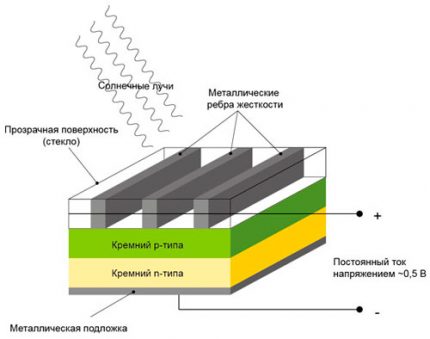
The second nuance is the concept of the term “solar battery” itself. Typically, the word "battery" refers to some kind of energy storage device. Or a banal heating radiator comes to mind. However, in the case of solar batteries, the situation is radically different. They do not accumulate anything in themselves.
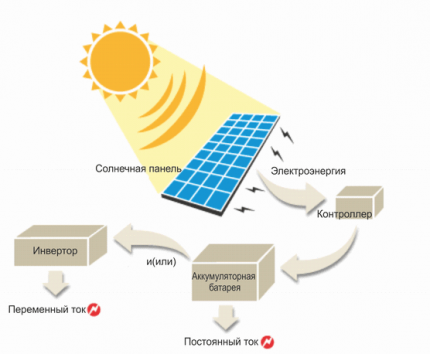
Solar panels are designed exclusively for generating electric current. It, in turn, accumulates to supply the house with electricity at night, when the sun goes down over the horizon, already in the batteries present in addition to the object’s power supply scheme.
The battery here is implied in the context of a certain combination of the same type of components assembled into a single whole. In fact, this is just a panel of several identical photocells.
The internal structure of the solar cell
Gradually, solar panels are becoming cheaper and more efficient. Now they are used to recharge batteries in streetlights, smartphones, electric cars, private homes and satellites in space. Of these, they even began to build full-fledged solar power plants (SES) with large volumes of generation.
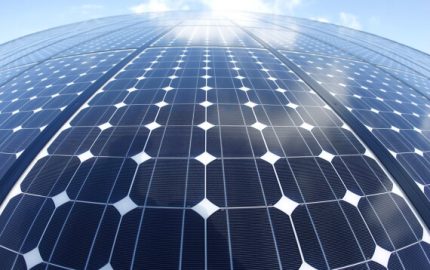
Each solar battery is arranged as a block of an nth number of modules that combine in series semiconductor photocells. To understand the principles of operation of such a battery, it is necessary to understand the operation of this final link in the solar panel device created on the basis of semiconductors.
Types of crystals of photocells
There are a lot of options for solar cells from different chemical elements. However, most of them are development in the initial stages. So far, only panels made of silicon-based solar cells are currently being produced on an industrial scale.
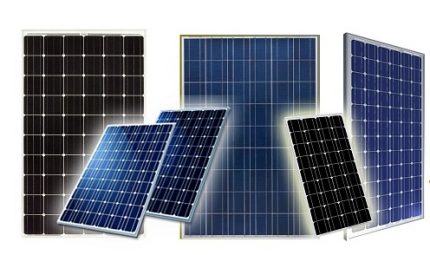
A common solar cell in a solar panel is a thin plate of two silicon layers, each of which has its own physical properties. This is a classic semiconductor pn junction with electron-hole pairs.
When photons hit the PEC between these layers of the semiconductor due to the inhomogeneity of the crystal, a gate photo-emf is formed, resulting in a potential difference and an electron current.
Silicon wafers of solar cells differ in manufacturing technology for:
- Monocrystalline.
- Polycrystalline.
The former have a higher efficiency, but the cost of their production is higher than that of the latter. Externally, one option from another on the solar panel can be distinguished by shape.
Single-crystal PECs have a uniform structure; they are made in the form of squares with cut corners. In contrast, polycrystalline elements have a strictly square shape.
Polycrystals are obtained by gradually cooling molten silicon. This method is extremely simple, therefore such photocells are also inexpensive.
But productivity in terms of generating electricity from sunlight they rarely exceed 15%. This is due to the “impurity” of the obtained silicon wafers and their internal structure. Here, the cleaner the p-layer of silicon, the higher the efficiency of the PEC from it.
The purity of single crystals in this respect is much higher than that of polycrystalline analogs. They are made not from molten, but from an artificially grown whole silicon crystal. The photovoltaic conversion coefficient for such solar cells already reaches 20-22%.

The upper layer of the solar cell plate facing the sun is made of the same silicon, but with the addition of phosphorus. It is the latter that will be the source of excess electrons in the pn junction system.
A real breakthrough in the use of solar energy was the development of flexible panels with amorphous photovoltaic silicon:
The principle of the solar panel
When sunlight falls on a photocell, nonequilibrium electron-hole pairs are generated in it. Excess electrons and "holes" are partially transferred through the pn junction from one semiconductor layer to another.
As a result, voltage appears in the external circuit. In this case, a positive pole of the current source is formed at the contact of the p-layer, and a negative pole at the n-layer.
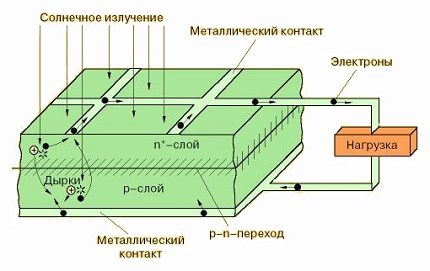
The photocells connected to an external load in the form of a battery form a vicious circle with it. As a result, the solar panel works like a kind of wheel along which electrons “run” together with proteins. And the rechargeable battery is gradually gaining charge.
Standard silicon photovoltaic cells are single junction cells. The transfer of electrons into them occurs only through one p-n junction with a zone of this transition limited in photon energy.
That is, each such photocell is capable of generating electricity only from a narrow spectrum of solar radiation. All other energy is wasted. Therefore, the efficiency of solar cells is so low.
To increase the efficiency of solar cells, silicon semiconductor elements for them have recently been made multi-junction (cascade). There are already several transitions in the new FEP. Moreover, each of them in this cascade is designed for its own spectrum of sunlight.
The total efficiency of the conversion of photons into electric current in such photocells ultimately increases. But their price is much higher. Here, either ease of manufacture with low cost and low efficiency, or higher returns coupled with high cost.
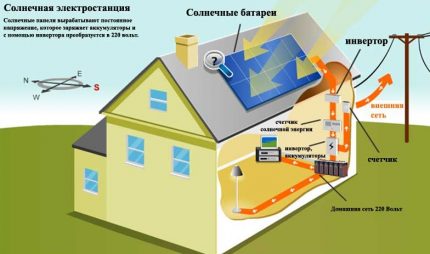
During operation, the photocell and the entire battery gradually heats up. All the energy that did not go to the generation of electric current is transformed into heat. Often the temperature on the surface of the heliopanel rises to 50–55 ° С. But the higher it is, the less efficient the photovoltaic cell works.
As a result, the same model of a solar battery generates less current in heat than in cold weather. Photocells show maximum efficiency on a clear winter day. Two factors affect this - a lot of sun and natural cooling.
Moreover, if snow falls on the panel, it will continue to generate electricity anyway. Moreover, snowflakes do not even have time to lie down on it, melted from the heat of heated photocells.
Solar battery efficiency
One photocell even at noon in clear weather gives out quite a bit of electricity, only enough for the LED flashlight to work.
To increase the output power, several solar cells are combined in a parallel circuit to increase the DC voltage and in series to increase the current strength.
The effectiveness of solar panels depends on:
- air temperature and the battery itself;
- the correct selection of load resistance;
- angle of incidence of sunlight;
- presence / absence of anti-reflective coating;
- power of a light stream.
The lower the temperature outside, the more efficient the photocells and the solar battery as a whole work. Everything is simple here. But with the calculation of the load, the situation is more complicated. It should be selected based on the current generated by the panel. But its value varies depending on weather factors.
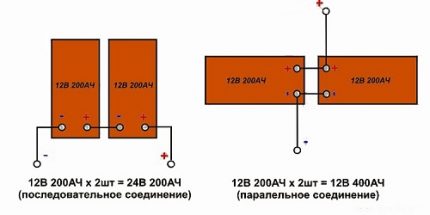
It is problematic to constantly monitor the parameters of the solar battery and manually adjust its operation. It’s better to use control controller, which automatically adjusts the settings of the solar panel itself in order to achieve maximum performance and optimal operating modes from it.
The ideal angle of incidence of the sun's rays on the solar cell is straight. However, when the deviation is within 30 degrees from the perpendicular, the efficiency of the panel falls only around 5%. But with a further increase in this angle, an increasing proportion of solar radiation will be reflected, thereby reducing the efficiency of the solar cells.
If the battery is required to give maximum energy in the summer, then it should be oriented perpendicular to the average position of the Sun, which it occupies on the days of the equinox in spring and autumn.
For the Moscow region, it is approximately 40–45 degrees to the horizon. If the maximum is needed in winter, then the panel should be placed in a more vertical position.
And one more thing - dust and dirt greatly reduce the performance of solar cells. Photons through such a "dirty" barrier simply do not reach them, which means there is nothing to convert into electricity. Panels must be washed regularly or placed so that the dust is washed off by the rain on its own.
Some solar cells have built-in lenses to concentrate radiation on the solar cells. In clear weather, this leads to increased efficiency. However, with heavy cloud cover, these lenses only do harm.
If a conventional panel in such a situation continues to generate current, albeit in smaller volumes, the lens model will stop working almost completely.
Ideally, the sun from a solar cell battery should be illuminated evenly. If one of its sections turns out to be darkened, then the unlit PEC turn into a parasitic load. They not only in this situation do not generate energy, but also take it from the working elements.
The panels must be installed so that there are no trees, buildings or other obstacles in the path of the sun's rays.
Power scheme of the house from the sun
The solar power system includes:
- Solar panels.
- Controller.
- Batteries.
- Inverter (transformer).
The controller in this circuit protects both solar panels and batteries. On the one hand, it prevents reverse currents from flowing at night and in cloudy weather, and on the other hand, it protects batteries from excessive charge / discharge.

To transform a DC current of 12, 24 or 48 Volts into alternating 220-volts needed inverter. Car batteries are not recommended for use in such a circuit because of their inability to withstand frequent recharges. It is best to spend money and purchase special helium AGM or jellied OPzS batteries.
Conclusions and useful video on the topic
Operating principles and solar panels not too complicated to understand. And with the video materials collected by us below, it will be even easier to understand all the intricacies of the functioning and installation of solar panels.
It is accessible and understandable how the photovoltaic solar battery works, in all details:
How solar panels are arranged, see the following video:
DIY assembly of a solar panel from photocells:
Every item in solar power system the cottage must be selected competently. Inevitable power losses occur on batteries, transformers, and the controller. And they must be reduced to a minimum, otherwise the sufficiently low efficiency of solar panels will be reduced to zero in general.
During the study of the material there were questions? Or do you know valuable information on the topic of the article and can tell it to our readers? Please leave your comments in the box below.

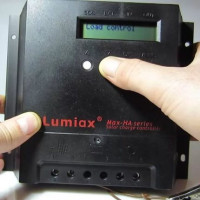 Solar charge controller: circuit, principle of operation, connection methods
Solar charge controller: circuit, principle of operation, connection methods  Solar panels for summer cottages and houses: types, principle of operation and calculation procedure for solar systems
Solar panels for summer cottages and houses: types, principle of operation and calculation procedure for solar systems 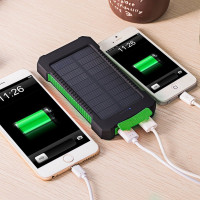 Solar charger: device and principle of operation of charging from the sun
Solar charger: device and principle of operation of charging from the sun 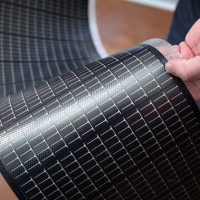 Flexible solar panels: an overview of typical designs, their characteristics and connection features
Flexible solar panels: an overview of typical designs, their characteristics and connection features 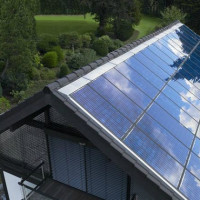 How to make a solar battery with your own hands: methods of assembly and installation of a solar panel
How to make a solar battery with your own hands: methods of assembly and installation of a solar panel 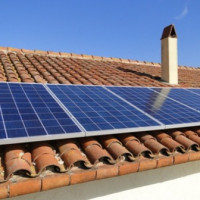 Schemes and methods of connecting solar panels: how to properly install the solar panel
Schemes and methods of connecting solar panels: how to properly install the solar panel  How much does it cost to connect gas to a private house: the price of organizing gas supply
How much does it cost to connect gas to a private house: the price of organizing gas supply  The best washing machines with dryer: model rating and customer tips
The best washing machines with dryer: model rating and customer tips  What is the color temperature of light and the nuances of choosing the temperature of the lamps to suit your needs
What is the color temperature of light and the nuances of choosing the temperature of the lamps to suit your needs  Replacement of a geyser in an apartment: replacement paperwork + basic norms and requirements
Replacement of a geyser in an apartment: replacement paperwork + basic norms and requirements
I have the idea of equipping my home with solar panels. A tempting prospect to get non-volatility. I read a lot of materials on this topic. There are many pros and cons. We need to weigh everything, because the pleasure is quite expensive. So this article did not add confidence. How to set the panel to get the maximum in summer and winter? What about leaving? Do you have to climb the roof regularly to clean the photocells from dust? Climbing the roof is not an easy task. And with age even more so. Everything must be taken into account to ensure comfortable operation. It’s good that various nuances are interpreted here.
Vladimir, put solar panels and don’t hesitate. If you have about 20 thousand dollars for the purchase of solar panels, then you should conclude an agreement on their installation and maintenance. Professionals will mount this battery at the right angle. And it’s not necessary to climb the roof yourself. Young children with a Karcher will come and wash and tighten up what is needed. I believe that the future lies with solar power plants.
20 thousand dollars for the installation of panels !? They do not justify themselves in life. Plus controller, batteries, voltage converter. How many of them will fly over time while you spend 20 thousand bucks on electric energy. So consider it profitable today or not.
I put in my dacha two panels of 200 W each, two batteries of 120 Amps each. Plus a 5 kW voltage converter (peak loads of 8 kW) and a controller. It cost about 1000 euros. There is enough heat for watering even at 35-40 °. But no more. I’ll build a house, I will add the number of panels, batteries and a controller. To put a windmill for the winter. I have no other choice. The summer cottage is not connected to the power supply. One connection will cost 1600 euros. Plus, electrical energy in suburban areas is expensive. Within 30 cents per 1 kW.
I understand your indignation, since the price tag of $ 20 thousand is really a lot, even if taking into account installation and commissioning. For most of our readers, this is a prohibitive amount.But the option that you implemented, plus the subsequent modernization and increase in the number of solar panels with subsequent performance is the best solution.
At the expense of the windmill in the winter, here I agree with you, because the performance of solar panels in the period from November to January drops to the minimum marks in our latitudes. Plus, in autumn and winter, the panels must always be cleaned of dirt, leaves and snow. So the windmill at this time of the year will be a great additional source of alternative energy. By the way, various options have been considered more than once on the forum and in articles.
Stop! And why is it necessary to mount solar panels on the roof? If you do not have a small territory in the yard, then you can easily implement ground-based placement of elements. In this case, it will be much easier to maintain the cleanliness of solar panels, especially in winter.
The frame for placing solar panels can be implemented both from metal and on a wooden base. But I would recommend the first option, as it is more reliable and durable.